
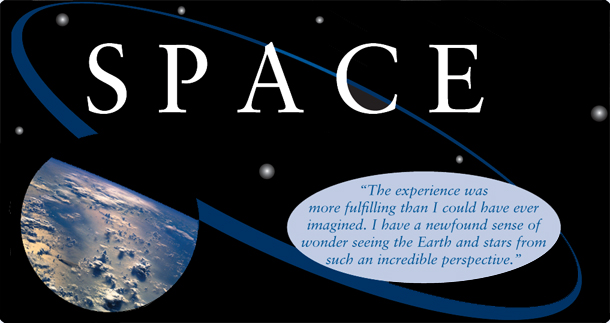
A Stellar Journey
Through an agreement with Russia’s Federal Space Agency and the Virginia firm Space Adventures Ltd., Olsen became the third private citizen to travel to the space station. He followed in the footsteps of the world’s first private space explorers, American businessman Dennis Tito in 2001 and South African Mark Shuttleworth in 2002.
Olsen accompanied NASA astronaut William McArthur and Russian cosmonaut Valery Tokarev. He said he was “in awe” of them and that he merely tried to “soak up their knowledge.” McArthur and Tokarev relieved the space station’s crew and were scheduled to stay there for six months. Olsen returned with cosmonaut Sergei Krikalev and American astronaut John Phillips.
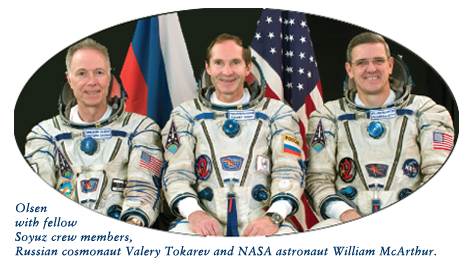
Olsen said that when the rocket was launched, he wasn’t nervous at all. “The only thing I was nervous about was that maybe I wasn’t going to go. And once I felt that rocket push off from the ground, I just felt that sense of relief and joy. The Russian Space Agency has a great safety record, and they’re great at space. And, with a crew like this, how could you go wrong?”
While in space, Olsen said he didn’t experience anything like motion sickness. “The most curious thing is the continual weightlessness, just floating in air.”
He also said that “sleeping isn’t like sleeping on Earth, because you can sleep anywhere. You can sleep on your side, you can sleep on the wall. It really doesn’t matter. And you don’t need a pillow because your head has no weight.” Regarding eating, Olsen said you eat in space “kind of like you do on Earth, only in smaller pieces.”
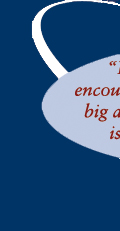
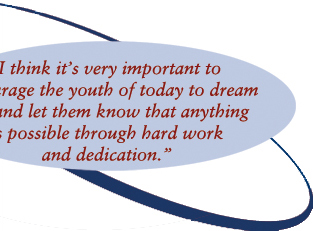
The space station, which is about the size of a large, three-bedroom home, travels at more than 17,000 miles an hour and orbits the globe a little more than 15 times a day.
Describing life at the space station, Olsen said, “In some ways it was like camping out, because we had no running water, no sinks, and we kind of had to fend for ourselves for food.” The best part, he said, was merely “being there. To look out and see the Earth from about 230 miles up is great.”
“It was an unforgettable experience that I am truly grateful for and will relive in my mind for the rest of my life.”
Olsen participated in a research program with the European Space Agency in which he studied the response of the human body to the microgravity environment. The experiments were designed to study the possible causes of nausea and lower back pain. He also examined the effects of space on microbes.
Olsen said, “My mission was a dream come true, and I would hope that my flight would help make space flight more routine.” But, he added, “I am first and foremost a scientist, and I carried out real science aboard the ISS. I am proud that my work will help understand medical conditions that affect so many people on Earth.”
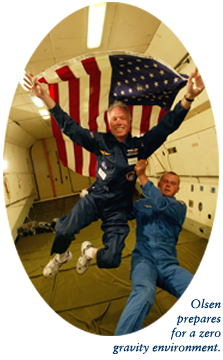
Even more important than his experiments is his desire to inspire the next generation of pioneers. “I want to share the experience with school groups, especially in inner cities and more remote areas. I want to motivate young people to pursue careers in science and math.”
From outer space, he discussed his experiences and impressions with family, friends and colleagues through a series of Webcasts. He also communicated via HAM radio signals with students from Princeton High School and Ridgefield Park High School in New Jersey and Fort Hamilton High School in New York.
“I think it’s very important to encourage the youth of today to dream big and let them know that anything is possible through hard work and dedication.”
Olsen’s adventure was undertaken with the theme, “Science and technology are the easy way up.” He added, “The real value in this trip is to motivate young students, especially females and the underprivileged. Science and engineering were a fast way up for me. That path is also available to anyone else who wants to use it. I hope to share my experience with many others to show them that if you work hard and don’t give up, wonderful things can happen, even if you’re from a ‘less than ideal’ background.” more …
Opening Page | Preparing to Fly
Reaching Great Heights | Fueled by FDU
FDU Magazine Home | Table of Contents | FDU Home | Alumni Home | Comments
©Copyright 2006 Fairleigh Dickinson University. All rights reserved.
For a print copy of FDU Magazine, featuring this and other stories, contact Rebecca Maxon, editor,
201-692-7024 or maxon@fdu.edu.